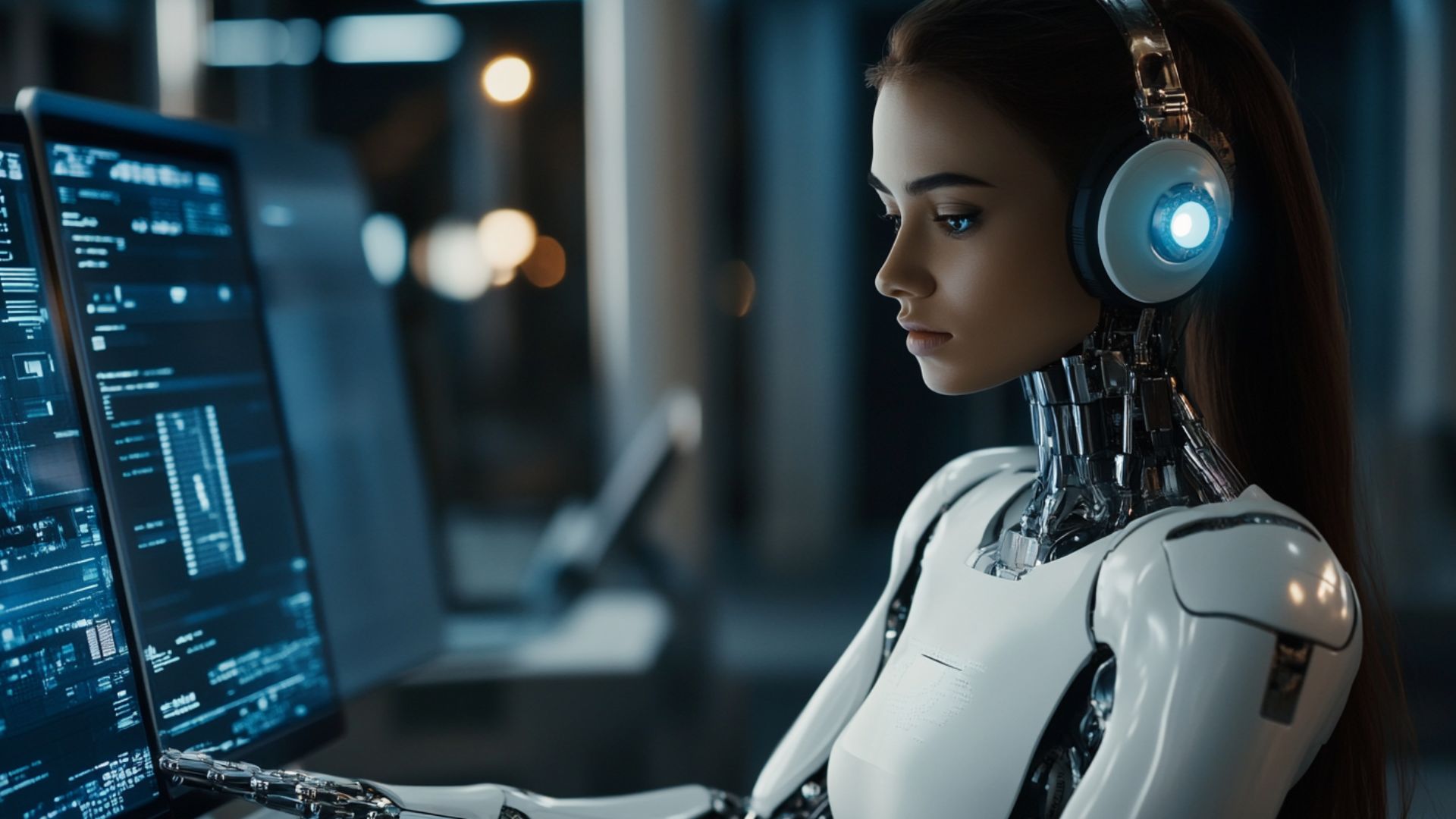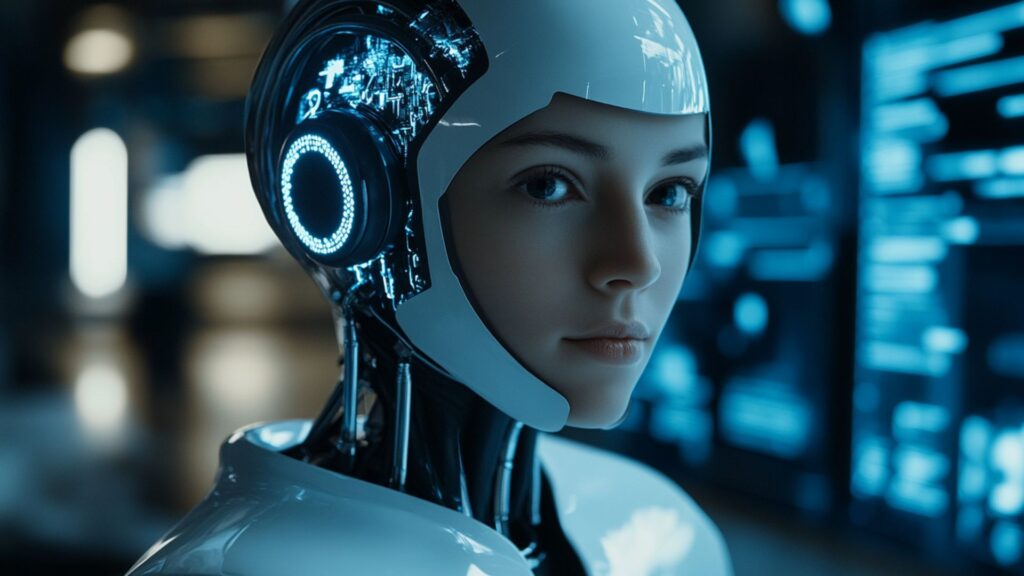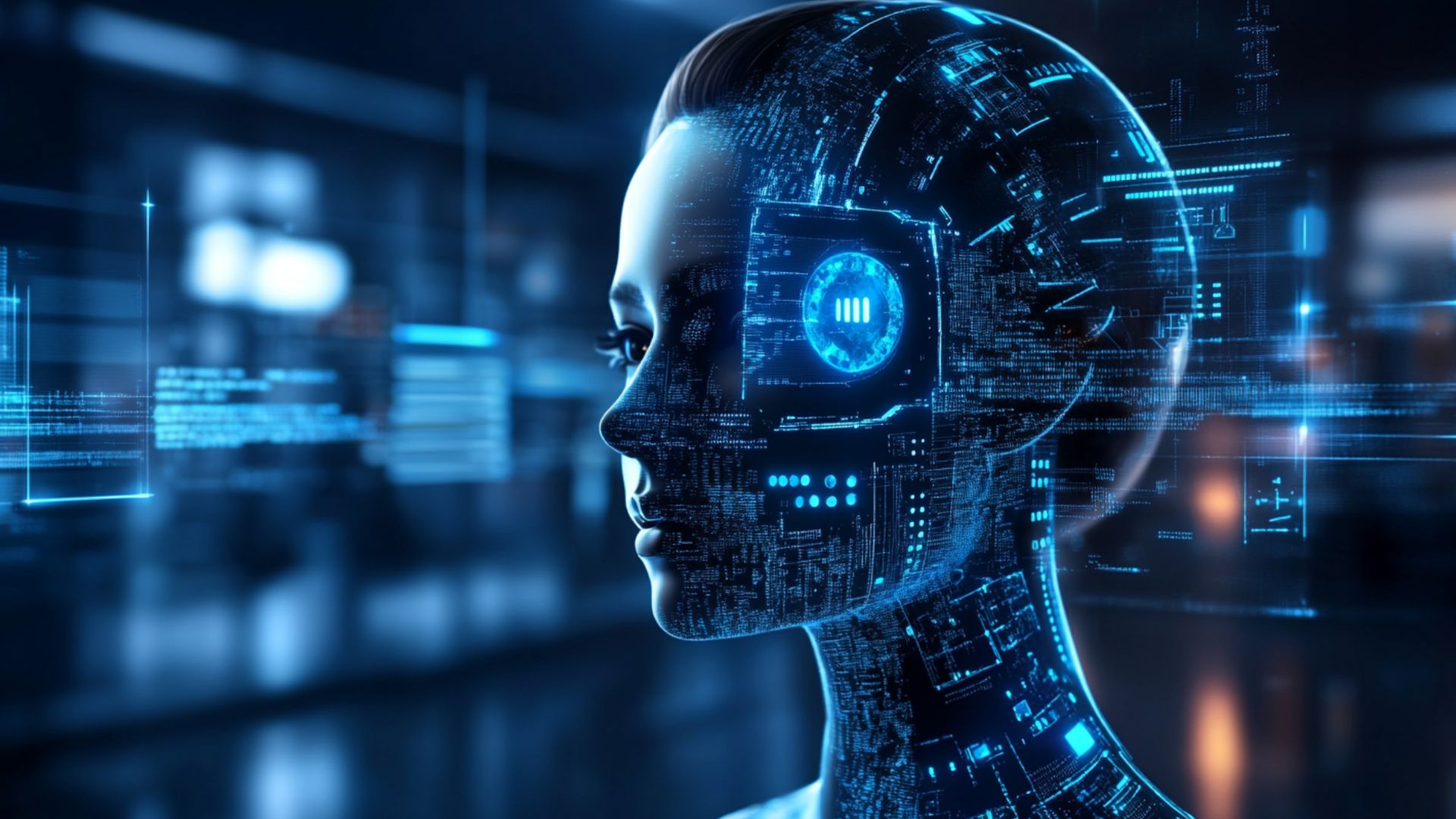AI Employees: How Virtual Assistants Transform the Workplace

AI employees are digital workers powered by artificial intelligence that streamline business operations. These intelligent agents automate repetitive tasks, support decision-making, and boost productivity significantly. They handle time-consuming activities like data entry, scheduling, and employee reviews. This frees human workers to focus on creative and strategic roles.
A virtual employee assistant manages emails and calendars efficiently. AI employee scheduling optimizes workforce planning with real-time adjustments. Review generators create fair, data-driven performance reports by analyzing employee metrics. These systems mimic human capabilities while maintaining consistency.
AI employees enhance efficiency and reduce errors substantially. This guide explores their benefits, including cost savings and scalability. AI employees exist in various forms including chatbots, analytics tools, and scheduling systems. We cover applications across healthcare, retail, and finance industries.
Finally, we examine the future of AI employees, including natural language processing advances and deeper workflow integration. As businesses embrace digital transformation, AI employees reshape workplaces by driving innovation and unlocking growth opportunities.
The Rise of AI Employees in the Modern Workplace
Businesses rapidly adopt AI employees to boost efficiency, cut costs, and enhance scalability. These digital workers streamline repetitive tasks, allowing companies to save time and resources. Unlike human staff, an AI employee operates 24/7 without fatigue, handling high-volume workloads consistently.
This availability enables businesses to adjust operations swiftly and meet demands without hiring surges. Cost savings come from reduced labor expenses and fewer errors. AI employees deliver reliable, data-driven results that maintain quality standards across operations.
Their evolution began with basic automation using rule-based scripts for simple tasks. Advancements in machine learning and natural language processing transformed them into intelligent virtual assistants. Today's AI employees analyze complex data, make informed decisions, and interact naturally with humans.
AI employees excel across industries:
- Customer Service: AI chatbots resolve inquiries instantly, improving satisfaction rates and reducing response times significantly.
- Human Resources: AI systems automate scheduling and generate objective performance reviews based on comprehensive data analysis.
- Finance: AI-powered systems detect fraud and streamline accounting processes with exceptional accuracy and speed.
Rather than replacing human staff, AI employees complement existing teams effectively. They handle mundane tasks while freeing workers for creative and strategic responsibilities. In HR, AI employees manage payroll while human managers focus on team development. In customer service, AI systems tackle routine queries, allowing agents to address complex issues.
This collaboration boosts productivity and improves job satisfaction. The rise of virtual employees marks a shift toward smarter workplaces. As businesses integrate these tools, they unlock new levels of efficiency and innovation.
From Automation to Intelligent Virtual Employees
The journey from basic automation to intelligent virtual employees represents a significant leap in workplace technology. Early automation relied on macros, basic chatbots, and scripts for repetitive tasks. Macros automated spreadsheet functions. Basic chatbots handled predefined queries with scripted responses. Scripts executed routine processes like data backups.
These tools followed strict rules and lacked adaptability or decision-making capabilities. They required explicit instructions for every scenario and couldn't learn from experience.
An intelligent AI employee demonstrates autonomy, learning capabilities, and adaptive decision-making. While simple automation requires detailed programming, AI-driven systems analyze data patterns and adjust to new scenarios. A virtual assistant schedules meetings by understanding context, prioritizes emails by importance, and generates reviews by analyzing multiple data points.
Technology evolution comparison:
| Technology | Capabilities | Examples |
| Macros | Rule-based task automation | Spreadsheet calculations |
| Basic Chatbots | Predefined responses | Customer service FAQs |
| Scripts | Fixed process execution | Data backups, file transfers |
| AI Employees | Adaptive, context-aware decisions | Intelligent virtual assistants |
The difference lies in flexibility and learning ability. Simple automation remains rigid and requires manual updates for new tasks. AI-driven systems allow virtual employees to learn from data and improve over time.
An AI scheduling assistant optimizes meetings based on past patterns, unlike static scripts. This evolution enables businesses to leverage scalable solutions that complement human workers while driving productivity.
Why Businesses Invest in Virtual Employee Services
Businesses invest in virtual employee services to maximize return on investment (ROI) through measurable improvements. These AI-powered services deliver significant benefits including reduced errors, faster processing, and 24/7 availability. An AI employee processes data with exceptional precision, minimizing costly mistakes.
Virtual employee services in accounting catch discrepancies that human reviewers might miss. Faster operations result from automating tasks like data entry and scheduling. Unlike human staff, AI employees work continuously, handling inquiries and updates without additional labor costs.
Companies use virtual services to scale efficiently without hiring expenses. A retail business can deploy AI employees to manage inventory across multiple locations. A startup might implement virtual employee services for customer support, handling thousands of daily inquiries.
Key ROI benefits:
- Error Reduction: AI employees ensure accurate data processing and reporting with consistent quality standards.
- Operational Speed: Automation streamlines payroll and ticket resolution, enhancing overall efficiency significantly.
- Continuous Availability: AI employees work non-stop, providing enhanced service without overtime costs.
- Scalability: Virtual services adapt to increased workloads without proportional expense increases.
Businesses adopting virtual employee services achieve substantial cost savings and operational flexibility. These tools complement human workers, allowing teams to focus on strategic goals. As efficiency demands increase, virtual services become essential for competitive advantage.
Core Functions of AI Employees

AI employees transform workplaces with versatile capabilities spanning task automation, data analysis, communication management, and scheduling optimization. These functions streamline business operations across diverse industries and organizational structures effectively.
AI employees automate critical tasks including HR data entry and logistics inventory tracking. They analyze large datasets to provide actionable insights for customer support strategies. Communication management becomes seamless as an AI employee handles emails and queries using natural language processing.
Scheduling functions ensure efficient workforce and resource allocation. Reporting capabilities deliver accurate, real-time performance metrics that support informed decision-making across organizational levels.
Core capabilities by business function:
- Human Resources: AI employees automate payroll processing, generate objective performance reviews, and manage recruitment workflows efficiently.
- Logistics Operations: AI systems optimize delivery routes, track shipments in real-time, and predict supply disruptions.
- Customer Support: AI employees resolve inquiries instantly while maintaining high satisfaction rates and service consistency.
- Financial Management: AI systems process transactions, detect fraud, and generate comprehensive financial reports automatically.
The key advantage lies in adaptability and continuous learning capabilities. Unlike rigid automation, an AI employee learns from data patterns and adjusts to new requirements. An AI employee in HR refines hiring criteria based on past outcomes. In logistics, they adapt to supply disruptions. In support, they personalize responses using interaction history.
This flexibility enables AI employees to evolve with business needs while reducing costs. By integrating AI employees, organizations improve productivity and enable human workers to focus on strategic activities.
AI Employee Review Generator in HR
An AI employee review generator transforms HR departments by streamlining performance evaluations and ensuring consistent assessments. This system automates feedback generation, saving time while maintaining fairness across all reviews.
By analyzing key performance indicators and productivity metrics, AI review generators deliver objective evaluations based on evidence. These systems process data from sales figures, project completion rates, and customer scores. This approach eliminates manual effort and reduces human bias in assessments.
HR teams can focus on strategic initiatives like employee development and training while AI handles review generation. The system creates efficient feedback loops that foster growth through timely, accurate insights.
Key benefits:
- Objective Assessment: AI systems base reviews on data analysis rather than personal opinions, ensuring fairness.
- Time Efficiency: Automated report creation significantly reduces HR workload and administrative burden effectively.
- Data-Driven Insights: Advanced analytics identify performance trends and provide actionable improvement feedback.
- Consistency: Standardized criteria ensure all employees receive fair, comparable assessments across the organization.
An AI review generator can assess sales team performance by analyzing revenue data and customer feedback. It produces comprehensive reviews without favoritism or bias. This objectivity builds trust and ensures fair evaluations.
AI employee review generator adapt to evolving performance indicators and organizational goals, ensuring evaluations remain relevant. The system tracks progress over time, identifying improvement trends and support needs.
By implementing AI review generators, HR departments enhance fairness while saving significant resources. This technology supports continuous improvement and data-driven decision-making that benefits everyone.
AI Employee Scheduling for Smarter Workforce Management
AI employee scheduling revolutionizes workforce management by optimizing shifts, balancing workloads, and forecasting staffing requirements accurately. Using sophisticated algorithms, these systems analyze historical data including sales trends and customer traffic. This creates efficient schedules matching operational demand.
AI employee scheduling reduces manual planning and minimizes allocation errors. They adapt to real-time changes like absences or demand spikes, automatically adjusting schedules.
Industry applications:
- Retail Operations: AI scheduling aligns staff with peak shopping periods, ensuring adequate coverage while avoiding overstaffing.
- Healthcare Facilities: Systems ensure proper nurse ratios during patient surges and maintain coverage across departments.
- Restaurant Management: AI balances server workloads across busy periods, optimizing service while preventing burnout.
Key benefits:
- Shift Optimization: Matches staffing levels precisely to high-demand periods and operational requirements effectively.
- Workload Distribution: Distributes responsibilities evenly to prevent employee burnout and maintain service quality.
- Predictive Accuracy: Forecasts staffing needs using historical patterns and predictive analytics for better planning.
- Cost Management: Minimizes overstaffing expenses and reduces reliance on costly overtime or temporary staff.
AI-driven scheduling impacts both cost efficiency and employee satisfaction substantially. By predicting staffing requirements accurately, systems minimize overstaffing costs and expensive overtime. Retail businesses avoid excess labor during slower periods. Healthcare facilities reduce expensive temporary staff reliance.
Beyond cost savings, AI employee scheduling enhances employee satisfaction by creating fairer schedules respecting work-life balance. This improves retention rates and workplace morale significantly. AI-driven scheduling enables businesses to operate efficiently while staying competitive.
Advantages of Employee Virtual Assistants

Employee virtual assistants serve as digital partners that streamline daily work activities for managers and staff. Powered by advanced AI technology, these systems automate repetitive tasks while boosting productivity. Virtual assistants enhance collaboration and workflow coordination across teams.
Key functions of an employee virtual assistant include:
- Meeting Management: Automatically schedules meetings, books rooms, sends invitations, and manages attendee coordination efficiently.
- Task Reminders: Delivers timely alerts for deadlines, important tasks, follow-ups, and scheduled appointments consistently.
- Data Management: Automates report input, customer information entry, and project update documentation seamlessly.
- Workflow Optimization: Streamlines processes to ensure smooth task coordination and efficient project progression.
Managers benefit from virtual employee services by reducing administrative burdens and improving strategic focus. These systems handle complex scheduling and generate data-driven reports automatically. This frees managers for strategic planning and team leadership activities.
Staff gain substantial efficiency through virtual assistant support. Systems manage deadline reminders, ensuring projects stay on track. Automated data entry reduces repetitive work, allowing focus on creative problem-solving.
Practical applications:
- Marketing Teams: Virtual assistants track campaign deadlines and manage content schedules, enabling creative strategy focus.
- Sales Departments: AI assistants manage lead tracking and customer data, letting professionals build relationships.
- Project Management: Virtual assistants coordinate timelines and stakeholder communication, ensuring smooth execution.
The Future of AI Employees: Opportunities and Challenges
The future of AI employees lies in deeper integration with robotics, Internet of Things devices, and enterprise systems. This technological convergence will create more sophisticated digital workforce solutions.
Robotics integration will enhance employee virtual assistants with physical task capabilities for inventory management and equipment maintenance. IoT connectivity will provide real-time data access from sensors and operational systems. Enterprise integration will create seamless data flow across business platforms.
Emerging opportunities:
- Hyper-Personalized Assistance: AI employees will tailor support to individual work styles and productivity patterns.
- Advanced HR Automation: Complete automation of recruitment, onboarding, performance management, and career development planning.
- Real-Time Decision Support: AI employees will provide instant analytical insights for strategic business decisions.
- Predictive Operations: AI systems will anticipate operational needs and market opportunities before they occur.
These advancements will drive unprecedented productivity and innovation. AI employees in retail will use IoT data to adjust staffing based on real-time traffic. In HR, systems will predict talent needs and identify retention issues proactively.
Critical challenges:
- Data Privacy Concerns: Organizations must ensure AI employees handle sensitive information securely and comply with regulations.
- Ethical Implementation: AI systems must operate transparently without perpetuating bias or discrimination in decisions.
- Human Oversight Requirements: Maintaining appropriate supervision and control over AI decision-making processes remains essential.
- Workforce Adaptation: Training employees to collaborate with AI systems and adapt to changing responsibilities.
The vision for AI employees is clear: they will become indispensable partners enhancing human capabilities. AI employees will handle routine tasks while enabling humans to focus on creativity and strategic thinking.
By addressing ethical considerations and implementation challenges proactively, AI employees will reshape workplaces fostering collaboration and innovation. Organizations successfully integrating AI employees will achieve competitive advantages through improved efficiency and employee satisfaction.


